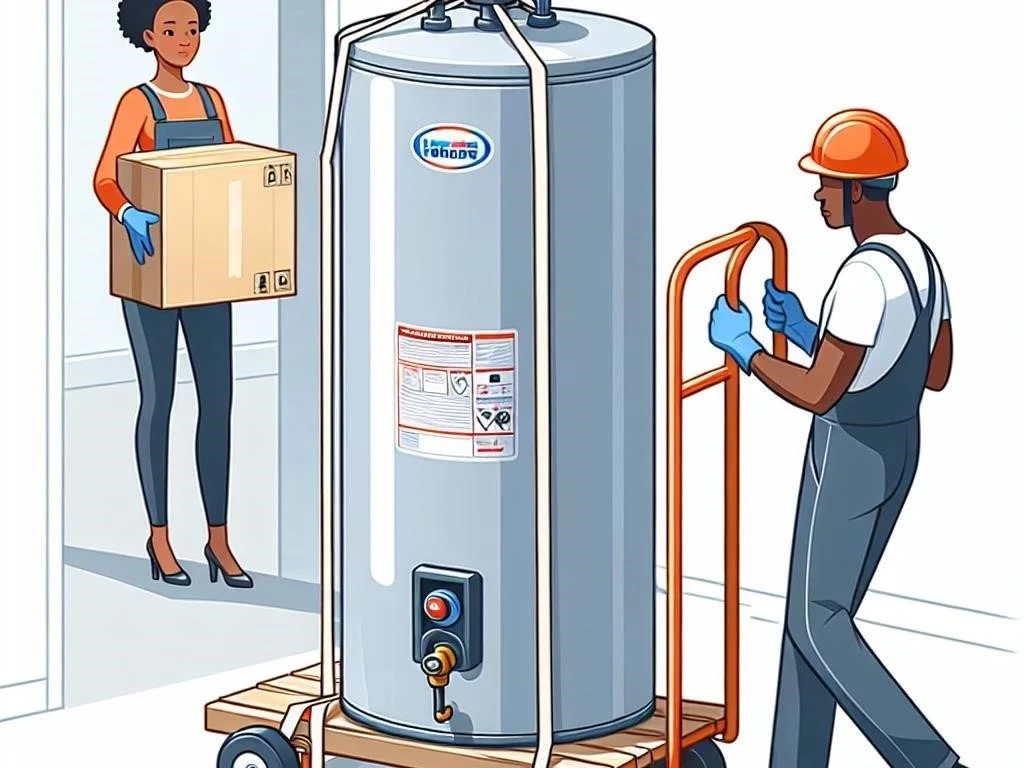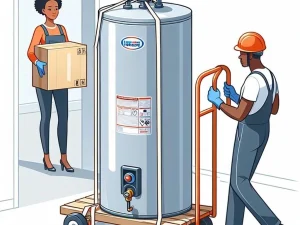How Should You Transport a Load on a Flatbed Trailer
Transporting loads on flatbed trailers requires careful planning, proper securing methods, and adherence to safety regulations to ensure successful, efficient, and safe freight transport operations.
Flatbed trailers are essential transport equipment in the freight transport industry, designed for hauling various cargo types. These trailers feature a flat, open platform without sides or a roof, making them ideal for heavy loads such as shipping containers, machinery, and construction materials. Their versatility allows for efficient loading and unloading from multiple angles, which is crucial in transportation logistics. When utilizing flatbed trucking, it is vital to understand the importance of load securing and safety regulations. Proper load arrangement and weight distribution ensure load stability during transit, ultimately leading to safer road safety practices. By adhering to hauling guidelines, operators can guarantee that all cargo is securely transported, meeting legal requirements in the process.
Understanding Cargo Transportation
Cargo transportation involves the movement of goods from one location to another, often requiring careful planning and execution. When utilizing flatbed trailers, it is crucial to consider factors such as load stability and weight distribution. Proper load planning ensures that heavy loads are balanced correctly, minimizing the risk of accidents during transit. Understanding the different trailer types, such as step deck and extendable trailers, can optimize the transportation process for specific cargo needs. Additionally, familiarity with tarping methods is essential for protecting flatbed cargo from environmental elements during transit. By adhering to established hauling guidelines and safety regulations, operators can enhance road safety, ensuring a secure load while efficiently managing the entire transportation logistics process.
The Importance of Load Securing
Securing the load on a flatbed trailer is critical for ensuring safe transportation and minimizing the risk of accidents. Proper load securing methods, such as using tie-down straps, play a vital role in maintaining load stability during transit. A well-secured load prevents shifting or falling, which can lead to damage, injury, or legal repercussions. Understanding safety regulations and compliance requirements is essential for operators to avoid costly penalties. Additionally, effective load management and balancing techniques contribute to overall transportation efficiency. By implementing appropriate tarping methods, operators can protect cargo from weather elements and enhance safety. Ultimately, prioritizing load securing not only protects the cargo but also ensures the safety of all road users.
Types of Flatbed Trailers
Flatbed trailers come in various types, each designed for specific cargo transportation needs. Standard flatbed trailers are versatile and commonly used for general freight transport, suitable for a wide range of loads. Step deck trailers feature a lower deck height, allowing for taller cargo transportation while maintaining legal height limits. Extendable flatbed trailers offer flexibility for transporting oversized loads, as they can be lengthened to accommodate varying cargo sizes. Additionally, specialized flatbed trailers exist for specific industries, such as those designed for transporting heavy machinery or construction materials. Understanding these different trailer types helps operators choose the best option for their load, ensuring compliance with safety regulations and enhancing overall transportation efficiency.
4.1 Standard Flatbed Trailers
Standard flatbed trailers are the most commonly used type in cargo transportation, characterized by their open platform design. These trailers provide a versatile solution for hauling various freight, including building materials, machinery, and shipping containers. Their flat surface allows for easy loading and unloading from multiple angles, making them ideal for different operational needs. When using standard flatbed trailers, ensuring proper load securing and weight distribution is crucial for maintaining load stability during transit. Operators should utilize appropriate tie-down straps and follow established hauling guidelines to avoid accidents. Understanding the legal requirements associated with these trailers is vital, as compliance with safety regulations ensures smooth and efficient transportation operations.
4.2 Step Deck Trailers
Step deck trailers, also known as drop deck trailers, are specifically designed to transport taller cargo safely while adhering to legal height limits. These trailers feature a two-level deck, with the front section elevated and the rear section lower, allowing for increased vertical clearance. This design is ideal for hauling heavy or oversized loads, such as construction equipment or machinery. When utilizing step deck trailers, it is essential to implement proper load securing techniques and weight distribution practices to ensure load stability. Operators should use tie-down straps and consider the unique shape of the cargo when planning the load arrangement. Understanding applicable safety regulations and legal requirements is crucial for successful transportation operations.
4.3 Extendable Flatbed Trailers
Extendable flatbed trailers are designed to accommodate oversized and lengthy cargo by adjusting their length as needed. This flexibility makes them ideal for transporting large equipment, construction materials, or other oversized loads that exceed standard trailer dimensions. When using an extendable flatbed trailer, accurate load planning is vital, ensuring that the weight distribution complies with legal requirements for safe transport. Proper load securing techniques, including the use of tie-down straps, must be employed to maintain load stability, particularly when the trailer is extended. Additionally, operators should familiarize themselves with safety regulations and hauling guidelines specific to oversized loads. By doing so, they can ensure successful transportation while adhering to road safety standards.
Load Arrangement and Weight Distribution
Load arrangement and weight distribution are crucial factors in ensuring the safe transportation of cargo on flatbed trailers. Proper load planning involves strategically placing cargo to achieve optimal balance, preventing swaying or shifting during transit. Heavy loads should be positioned over the axles to maintain stability, while lighter items can be placed towards the front or rear. Understanding the center of gravity is essential for load stability, as it affects how the trailer handles on the road. Additionally, operators should utilize effective load securing methods, such as tie-down straps, to prevent movement. By adhering to these principles, operators can enhance road safety and comply with transportation logistics best practices.
5.1 Load Balancing Techniques
Load balancing techniques are essential for ensuring stability and safety during the transportation of cargo on flatbed trailers. To achieve proper balance, operators should first assess the weight of the load and distribute it evenly across the trailer. Placing heavier items over the axles helps maintain stability and prevent excessive strain on the trailer structure. Additionally, it is important to consider the arrangement of lighter items, ensuring they do not shift during transit. Using appropriate tie-down straps can further enhance load security. Regular checks of the load’s position during transport can help identify any shifts that may occur; By employing these techniques, operators can ensure safer journeys and minimize risks associated with poor load distribution.
5.2 Factors Affecting Weight Distribution
Several factors influence weight distribution when transporting cargo on flatbed trailers, significantly impacting load stability and road safety. First, the type and size of the cargo play a crucial role; heavier items must be placed strategically to avoid overloading one side. Additionally, the trailer’s design, including axle placement and weight ratings, affects how loads should be arranged. Environmental conditions, such as wind and road surfaces, can also alter weight distribution, necessitating adjustments during transit. Proper loading techniques, including using the right tie-down straps, ensure that cargo remains secure and balanced. Lastly, compliance with legal requirements regarding weight limits is essential for safe and effective transportation logistics, preventing accidents and ensuring road safety.
Securing the Load
Securing the load on a flatbed trailer is a fundamental aspect of safe cargo transportation. Proper load securing methods ensure that the cargo remains stable throughout the journey, minimizing the risk of accidents or damage. Operators should utilize a combination of tie-down straps, chains, and edge protectors to create a secure hold on the load. It is essential to follow manufacturer guidelines and safety regulations regarding load securing techniques. Additionally, regular inspections during transit can identify any potential shifts or loose straps. Understanding the unique characteristics of the cargo, including weight and shape, aids in selecting appropriate securing methods. By prioritizing load security, operators enhance road safety and ensure compliance with legal requirements.
6.1 Choosing the Right Tie-Down Straps
Choosing the right tie-down straps is crucial for effectively securing cargo on flatbed trailers. The selection process begins with assessing the weight and size of the load, as different straps have varying weight capacities. Common options include webbing straps, ratchet straps, and chain binders, each suitable for specific applications. Ratchet straps provide adjustable tension, making them ideal for heavier loads, while webbing straps are lightweight and easy to handle. Additionally, consider the length and material of the straps to ensure compatibility with the cargo and trailer. Always inspect straps for wear and tear before use, and comply with safety regulations regarding securing methods. Properly chosen tie-down straps enhance load stability and promote road safety during transport.
6.2 Tarping Methods for Flatbed Cargo
Tarping methods are vital for protecting flatbed cargo from environmental elements during transport. When using tarps, it is essential to select durable materials that can withstand various weather conditions. Common materials include polyethylene and canvas, both offering excellent protection. Properly securing the tarp is crucial; use bungee cords, rope, or tie-down straps to ensure it remains in place throughout the journey. Additionally, consider the shape and size of the cargo when choosing tarp configuration, ensuring complete coverage to prevent water or debris from entering. Regularly inspect the tarp during transit for any signs of wear or damage. By employing effective tarping methods, operators enhance cargo protection and comply with transportation logistics best practices.
Safety Regulations and Legal Requirements
Adhering to safety regulations and legal requirements is essential for transporting loads on flatbed trailers. These guidelines ensure that operators maintain safe practices while minimizing risks on the road. Each jurisdiction has specific regulations regarding load limits, securing methods, and equipment standards. Understanding these rules is vital for compliance and avoiding legal penalties. Additionally, drivers must be familiar with weight distribution regulations, which help maintain vehicle stability during transport. Regular inspections and maintenance of the trailer and cargo are necessary to ensure safety and efficiency. By following established hauling guidelines, operators not only protect their cargo but also contribute to overall road safety, ensuring a safer environment for all road users.
7.1 Understanding Hauling Guidelines
Understanding hauling guidelines is crucial for the safe and efficient transportation of cargo on flatbed trailers. These guidelines encompass regulations that dictate how loads must be arranged, secured, and balanced to ensure stability during transit. Operators should familiarize themselves with weight limits, as exceeding these can lead to penalties and safety hazards. Additionally, proper documentation is often required, including bills of lading and permits for oversized loads. It is essential to understand the specific requirements for different types of cargo, as well as any regional regulations that may apply. By adhering to these hauling guidelines, operators enhance compliance with safety regulations, ultimately ensuring safer journeys for both drivers and other road users.
7.2 Compliance with Road Safety Standards
Compliance with road safety standards is essential when transporting loads on flatbed trailers. These standards are designed to protect not only the cargo but also the driver and other road users. First, operators must ensure that their trailer meets all safety requirements, including proper lighting, reflective markings, and functioning brakes. Additionally, regular inspections and maintenance of the trailer and securing equipment are necessary to prevent accidents. Operators should also be aware of weight limits and load distribution regulations to maintain vehicle stability. Understanding and following these road safety standards not only enhances the safety of the transportation process but also helps avoid legal repercussions and improves overall operational efficiency.
Best Practices for Load Stability
Implementing best practices for load stability is crucial when transporting cargo on flatbed trailers. First, ensure proper load arrangement by distributing weight evenly across the trailer to maintain balance. Heavy items should be placed over the axles, while lighter loads can be positioned towards the front or rear. Additionally, utilize high-quality tie-down straps and secure all cargo tightly to prevent shifting during transit. Regularly inspect the load during breaks to ensure stability has not been compromised. Employing effective tarping methods also protects cargo from environmental factors. Training drivers on these best practices enhances their understanding of load management and contributes to safer transportation logistics, ultimately promoting road safety for everyone involved.
8.1 Cargo Management Techniques
Effective cargo management techniques play a vital role in ensuring successful transportation on flatbed trailers. Begin by conducting a thorough assessment of the cargo’s weight, dimensions, and shape to determine the best loading strategy. Utilize loading equipment such as forklifts or cranes to facilitate safe and efficient loading. Implementing a systematic approach to load arrangement can enhance stability; for example, stacking heavier items at the bottom and lighter ones on top. Regularly inspect loads during transport to identify any shifts or potential hazards. Additionally, proper documentation and tracking of cargo can aid in maintaining organization and accountability. By applying these cargo management techniques, operators can ensure safer and more efficient transportation logistics.
8.2 Transportation Logistics Considerations
Transportation logistics considerations are crucial when planning the safe transport of loads on flatbed trailers. First, route planning should account for weight limits on roads and bridges, ensuring compliance with legal requirements. Traffic conditions, weather forecasts, and road construction can also impact travel times and safety. Additionally, understanding the specific needs of the cargo, such as temperature control or protection from the elements, informs the choice of equipment and securing methods. Coordination with loaders and unloaders is vital for efficient operations, ensuring that all parties are prepared for timely loading and unloading. By addressing these logistics considerations, operators can enhance the efficiency, safety, and reliability of their transportation processes.














Post Comment